In the heart of Chiang Mai, a trekking adventure awaits those willing to step off the beaten path and embrace the region’s untouched beauty. Guided by locals who know every twist and turn, trekkers traverse 10-12 kilometers of stunning landscapes, far from the bustling tourist trails. These small group excursions foster intimate connections with both nature and culture, offering an authentic glimpse into local life. Yet, the allure of hidden trails and the stories they hold might just be the tip of the iceberg. What unexpected treasures lie in wait for those who choose this path?
Key Points
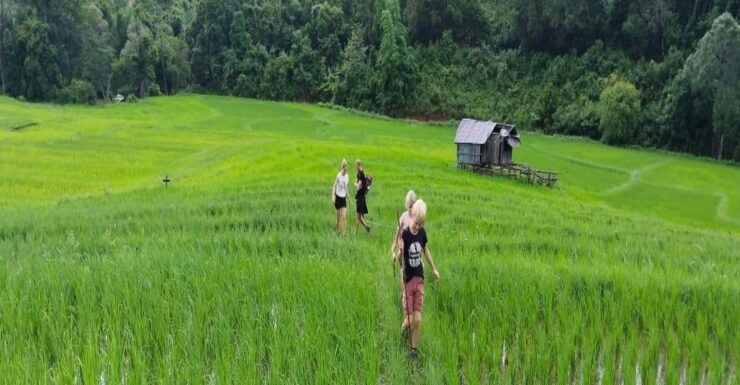
- Explore lesser-known trails in Chiang Mai for a more authentic trekking experience away from tourist crowds.
- Engage with local communities and learn about traditional Thai culture during the trek.
- Enjoy breathtaking scenery while trekking through Doi Inthanon National Park’s untouched landscapes.
- Small group sizes enhance the experience, allowing for personalized attention and connection with nature.
- Sustainable practices ensure the preservation of the environment and support local livelihoods during your adventure.
Overview of Chiang Mai Trekking
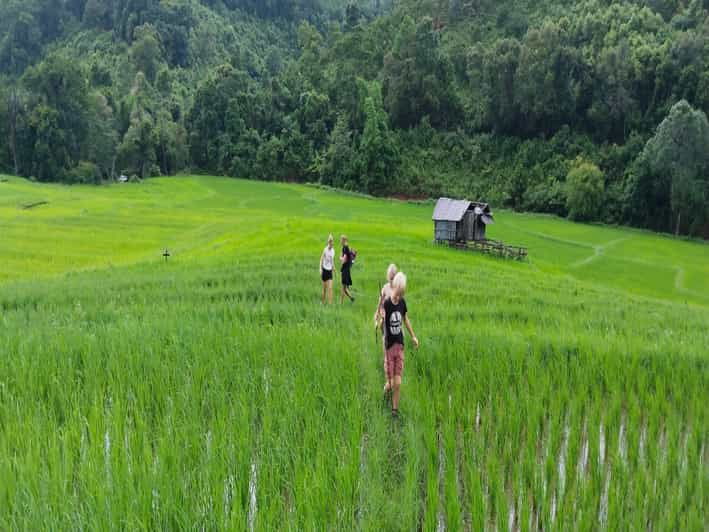
Chiang Mai Trekking offers an immersive adventure through Thailand’s breathtaking landscapes, combining a vibrant local experience with a journey into the heart of nature.
Participants embark on a thrilling trek that spans 10-12 kilometers, navigating medium-difficulty trails through lush jungles and serene rice terraces.
Each small group, limited to eight adventurers, enjoys the guidance of a knowledgeable, English-speaking tour guide who shares insights about the region’s flora and fauna.
Along the way, trekkers visit local markets, connect with mountain communities, and witness stunning panoramic views from Thajeko mountain peak.
This experience not only fosters a deep appreciation for the environment but also supports sustainable tourism, allowing travelers to disconnect from urban life and reconnect with nature’s beauty.
Like hiking? Other Thailand walking trails we've reviewed
Detailed Itinerary
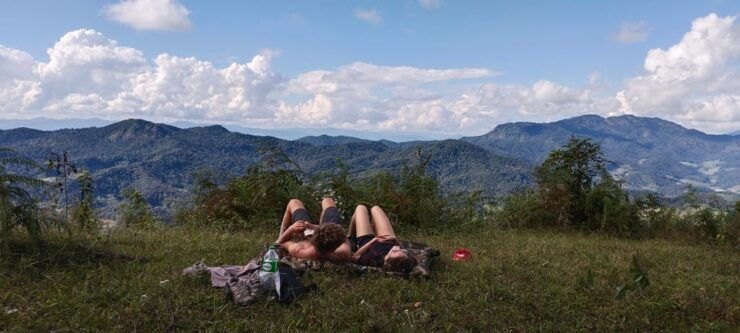
Participants can expect a well-structured day that begins with a convenient hotel pickup between 7:30 and 8:00 AM, setting the stage for an unforgettable trekking adventure.
After gathering supplies from a local market, the group travels to Doi Inthanon National Park, where the lush landscape unfolds. A jungle trek through dense forests unveils the beauty of local flora and fauna, enriching their experience.
At the Thajeko mountain peak, they savor a picnic lunch while soaking in panoramic views. The journey continues through picturesque rice terraces, offering insights into traditional farming techniques.
A refreshing visit to nearby waterfalls provides the perfect break before the trek concludes, ensuring participants leave with cherished memories and a deeper connection to nature.
Experience Local Culture
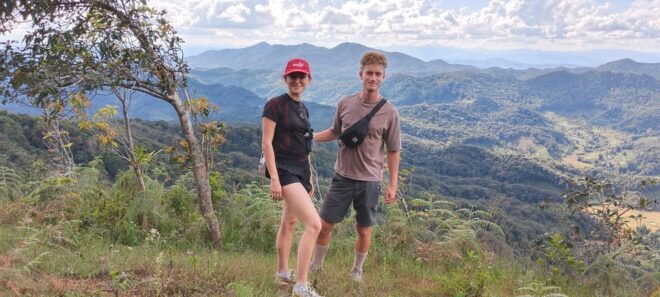
During the trek, travelers enjoy the vibrant local culture, discovering time-honored traditions and practices that define the mountain communities of northern Thailand.
They stroll through bustling local markets, where the aroma of fresh produce and spices fills the air. Engaging with friendly vendors, they learn about traditional crafts and culinary delights unique to the region.
As they traverse rice terraces, they witness farmers employing age-old techniques passed down through generations. Along the way, interactions with local families reveal insights into their daily lives, beliefs, and stories.
These connections foster a genuine appreciation for the rich heritage of the area, making each step of the journey not just a trek but a heartfelt cultural experience.
Importance of Sustainability
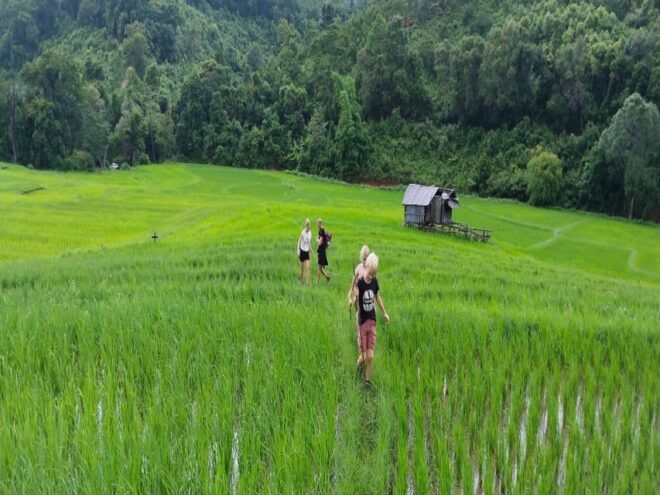
Emphasizing sustainability is crucial for preserving the breathtaking landscapes and rich biodiversity that make trekking in northern Thailand a truly unforgettable experience.
By prioritizing responsible tourism, trekkers contribute to the conservation of pristine environments and the livelihoods of local communities. Supporting local businesses and engaging with native cultures ensures that the benefits of tourism circulate within the communities that welcome them.
Sustainable practices, like minimizing waste and respecting wildlife, help maintain the delicate balance of these ecosystems. On top of that, immersing oneself in nature fosters a deeper appreciation for the environment, inspiring trekkers to advocate for its protection.
Ultimately, sustainable trekking not only enriches the traveler’s journey but also safeguards the enchanting beauty of northern Thailand for generations to come.
More Great Tours NearbyPreparation and Recommendations
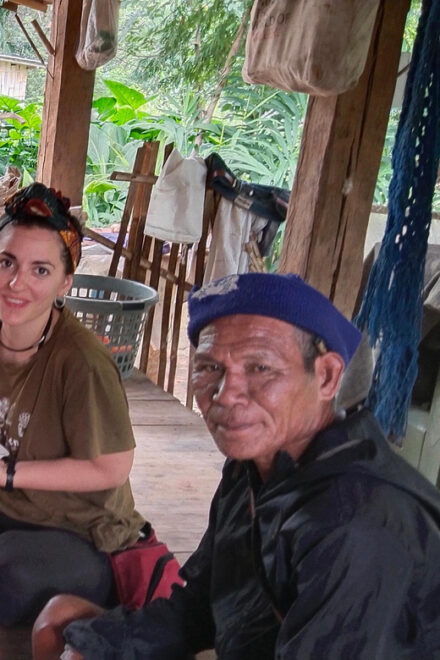
To fully enjoy the Chiang Mai trekking experience, trekkers should come prepared with essential gear and a spirit of adventure, ensuring a comfortable and memorable journey through the stunning landscapes.
Comfortable shoes are a must, as the terrain can be uneven and challenging. A sun hat, sunscreen, and insect repellent will protect against the elements. Trekkers should pack swimwear and a towel for refreshing dips in nearby waterfalls.
Weather-appropriate clothing is crucial, as conditions can change rapidly in the mountains. Don’t forget personal medication, a camera for capturing breathtaking views, and cash for local purchases.
Lastly, carrying a passport adds an extra layer of safety, allowing trekkers to immerse themselves fully in this authentic experience without worries.
- Phuket Thai Cooking Class
- Choose 5 Dishes: Half-Day Cooking Class in Sukhumvit With Market Tour
- Small Group Tour to Ayutthaya Temples From Bangkok With Lunch
- Ya's Thai Cookery School Class in Krabi
- Full Day Snorkeling Adventure Around Koh Tao
- Phi Phi Island by Premium Speedboat Including Buffet Lunch & National Park Fees
Customer Feedback
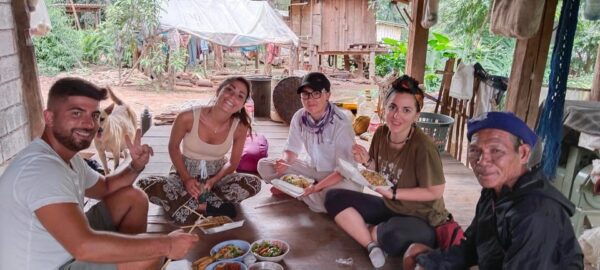
Trekkers often praise the Chiang Mai trekking experience for its breathtaking scenery and the knowledgeable guides who enrich their journey with insights into local culture and nature.
Many participants rave about the immersive experience, highlighting the lush landscapes and vibrant local markets. Reviewers frequently note the small group size, which fosters a more intimate atmosphere and allows for personalized attention.
The trek’s balance of adventure and relaxation, especially during lunch at the mountain peak, leaves a lasting impression. With an impressive overall rating of 4.6 out of 5, feedback consistently reflects satisfaction with transportation and value for money.
Trekkers appreciate the opportunity to connect with rural communities and discover authentic Thai traditions while exploring the natural beauty of the region.
Tips for a Great Trek
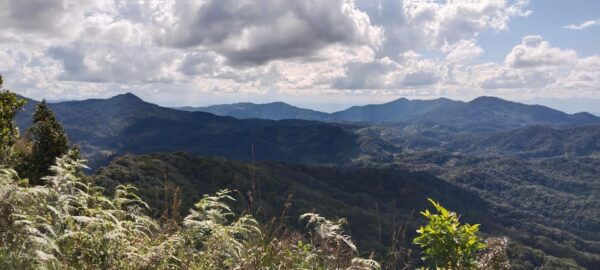
Packing the right essentials can make all the difference in ensuring a memorable and enjoyable trekking experience in Chiang Mai. To enhance the trek, travelers should consider the following tips:
| Essential Item | Purpose | Notes |
|---|---|---|
| Comfortable Shoes | Support for long walks | Waterproof recommended |
| Sun Hat | Protection from sun exposure | Lightweight fabric |
| Insect Repellent | Protection against bugs | Choose natural options |
| Weather-Appropriate Clothing | Comfort in varying conditions | Layering is key |
Staying hydrated and carrying a camera for those breathtaking views is crucial. Travelers should also pack personal medication and cash for local purchases. With these essentials in hand, trekkers can fully enjoy Chiang Mai’s stunning landscapes and vibrant culture.
Booking Information and Policies
Booking a trekking adventure in Chiang Mai is straightforward, with clear policies that ensure a seamless experience for all participants. Guests can secure their spot for just $70.77, which covers a full day of exploration, including a knowledgeable English-speaking guide.
With a maximum of eight trekkers per group, the experience feels intimate and personal. They offer free cancellation up to 24 hours before the trek, providing flexibility for travelers.
Participants should prepare for a medium-difficulty trek, requiring comfortable footwear and weather-appropriate clothing. It’s essential to note the trek’s restrictions, as it’s not suitable for individuals with certain health issues.
Questions You May Have
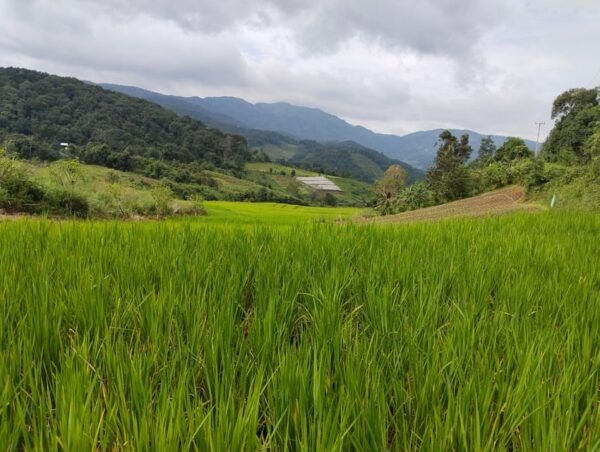
What Is the Best Time of Year for Trekking in Chiang Mai?
The best time for trekking in Chiang Mai is from November to February. During these months, the weather’s cooler, making it ideal for outdoor adventures. Enthusiasts enjoy clear skies and vibrant landscapes, enhancing their trekking experience.
Are There Any Age Restrictions for Participants on the Trek?
The trek imposes age restrictions, ensuring safety for all participants. It’s unsuitable for individuals over 70 years, pregnant women, or those with mobility issues. Everyone else can enjoy the adventure and breathtaking scenery.
Can Dietary Restrictions Be Accommodated During the Lunch Stop?
When it comes to dietary restrictions, the tour operator’s flexible approach ensures participants’ needs are met. They’ll gladly accommodate various preferences, allowing everyone to enjoy a delightful and satisfying lunch during the trek.
Is Transportation Provided From Accommodations Outside of Chiang Mai?
Transportation’s typically provided for participants within the designated area. However, those staying outside the main zone might need to arrange their own travel. Confirming specific pickup details beforehand ensures a smooth start to the adventure.
What Is the Maximum Altitude Reached During the Trek?
The trek reaches an impressive altitude of around 2,565 meters at Doi Inthanon’s summit, where breathtaking views and diverse ecosystems await. Participants feel invigorated as they explore the stunning landscapes and rich biodiversity of the region.
Break Down
In the heart of Thailand, Chiang Mai Trekking offers an unforgettable adventure along serene, non-touristic trails.
Participants not only enjoy breathtaking landscapes but also forge meaningful connections with local cultures.
With a commitment to sustainability and small group experiences, trekkers leave with cherished memories and a deeper appreciation for the region’s natural beauty.
Those seeking an authentic journey away from the crowds will find this trek a perfect escape, filled with discovery and wonder.
You can check availability for your dates here: More Great Tours NearbyMore Hiking Tours in Thailand
More Tour Reviews in Thailand
- From Phuket : Private Speedboat Trip to Phi Phi and Bamboo
- Phuket: Private Early Bird Charter to Phi Phi & Bamboo
- Phuket: Private Speed Boat to Maiton and Khai Islands
- Phuket: Private Luxury Long Tail Boat to Raya and Coral
- Phuket: Private Speedboat Charter to Phi Phi & Khai Islands
- Phuket : Half Day Coral & Maiton by Luxury Long Tail Boat
Looking for something different? Other Thailand activities we've written about
- From Phuket : Private Speedboat Trip to Phi Phi and Bamboo
- Phuket: Private Early Bird Charter to Phi Phi & Bamboo
- Phuket: Private Speed Boat to Maiton and Khai Islands
- Phuket: Private Luxury Long Tail Boat to Raya and Coral
- Phuket: Private Speedboat Charter to Phi Phi & Khai Islands
- Phuket : Half Day Coral & Maiton by Luxury Long Tail Boat
- Phuket: RAYA YAI – PADI Open Water Diver Course
- Khao Lak: Ethical Elephant Sanctuary Overnight Adventure
- Phuket: 5 or 8-Island Jet Ski Tour With Lunch and Transfer
- Ko Lanta: 4 Islands Tour by Private Longtail Boat
- Ko Lanta: Exclusive Private Long-tail Boat Fishing Trip
- Phuket :Thai Cooking Class With Local Market Visit
